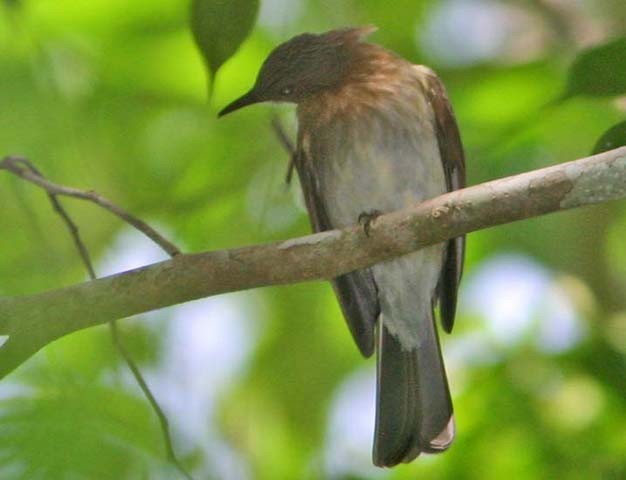Philippine Bulbul
A species of Indian Ocean Bulbuls and Allies Scientific name : Hypsipetes philippinus Genus : Indian Ocean Bulbuls and Allies
Philippine Bulbul, A species of Indian Ocean Bulbuls and Allies
Botanical name: Hypsipetes philippinus
Genus: Indian Ocean Bulbuls and Allies
Content
Description General Info
 Photo By Don Roberson
Photo By Don Roberson Description
The Philippine bulbul (Hypsipetes philippinus) is a songbird species in the bulbul family, Pycnonotidae. It is endemic to the Philippines. Its natural habitats are subtropical or tropical moist lowland forest and subtropical or tropical moist montane forest; on Mount Kitanglad on Mindanao for example it is abundant in any kind of primary forest at least between 500 and 2,250 m ASL. 
Size
22 cm
Nest Placement
Tree
Feeding Habits
Philippine Bulbul predominantly consumes fruit and likely includes insects. It typically forages alone or in pairs, occasionally in family groups, across understory to canopy levels, displaying a flexible feeding strategy.
Habitat
The philippine Bulbul typically resides in the interior and edges of broadleaf evergreen forests, as well as in shrubby clearings and areas of secondary growth. It is also adaptable to human-altered landscapes, thriving in well-treed agricultural areas such as coconut groves. Remarkably, it is capable of living on small offshore shrubby islets, where it may be one of the few passerines present.
Dite type
Frugivorous
General Info
Feeding Habits
Bird food type

Fruit
Behavior
Fledglings of the Philippine bulbul were recorded on Mindanao in late April, but the breeding season seems to be prolonged as females with ripe ovarian follicles were still found in April and May. Territorial songs are heard at lower altitudes as late as May, while further upslope the birds are silent at that time of year and presumably engaged in breeding activity. The besra has been recorded as a predator of young Philippine bulbuls, and this or other goshawks might also catch adult birds. A common and adaptable bird as long as sufficient forest remains, it is not considered a threatened species by the IUCN. 

 Photo By Don Roberson
Photo By Don Roberson